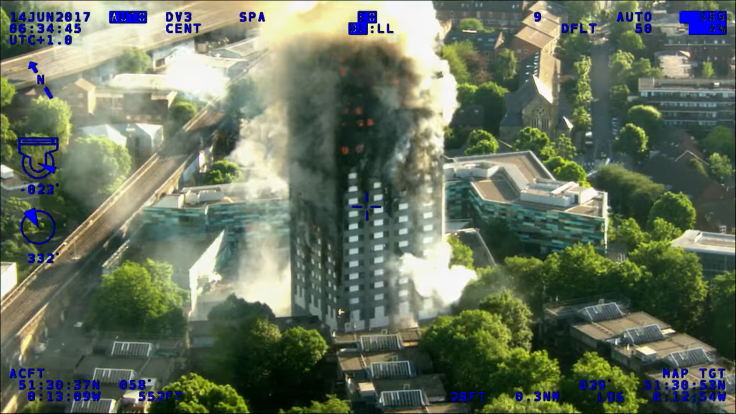Project Management Assessment 4
Title: Grenfell Tower: An Analysis of Its Failure
Student Name:
Student ID:
Course:
Professor:
Date:
Contents
2. Background of the Failed Project 3
4. Planning/Execution of the Failed Project 6
1. Flammable Cladding Materials 10
1. Introduction
2. Background of the Failed Project

In 2014, the Royal Borough of Kensington and Chelsea (RBKC) initiated a major refurbishment project aimed at revitalizing Grenfell Tower. The objectives included improving the building’s thermal insulation, upgrading its aesthetics, and extending its lifespan. The refurbishment involved the installation of new external cladding, which was intended to enhance energy efficiency by improving insulation and reducing heating costs for residents. The project also included a new fire-resistant façade, although the selected materials and design choices would later prove to be highly problematic.
3. Scope/Objectives of the Failed Project
Design and Purpose
Resources
Labor: A workforce comprising general contractors, subcontractors, and specialists in building refurbishment.
Consultants: Design and safety consultants who were responsible for planning and ensuring compliance with building regulations.
Overall Funding
Overall Timeline
Construction: Major construction activities were carried out from mid-2014 to early 2016.
Final Inspections: Concluding safety checks and project completion by May 2016.
4. Planning/Execution of the Failed Project
Work Breakdown Structure (WBS)
Design: Development of new design plans for the cladding and insulation upgrades.
Regulatory Approvals: Obtaining necessary permits and approvals from relevant authorities.
Cladding Installation: Application of the new cladding system and insulation.
Structural Modifications: Any required changes to the building’s structure to accommodate new installations.
Work Packages
The project was divided into specific work packages, each with defined tasks:
Cladding Installation: Involved the removal of old cladding and installation of new panels. This work was critical to achieving the project’s energy efficiency goals but failed due to the choice of highly flammable materials.
Timelines, Deliverables, and Milestones
Procurement: Throughout 2014 and 2015, with materials being sourced and contracts finalized.
Construction: Mid-2014 to early 2016, focusing on installing cladding, insulation, and making structural adjustments.
Cost Accounts
Miscellaneous Costs: Additional expenses for regulatory compliance and unforeseen issues.
Roles and Responsibilities
Project Manager: Oversaw the project’s overall progress, ensuring adherence to timeline and budget.
5. How the Project Failed
The Grenfell Tower project is determined to be a failure due to the catastrophic fire that occurred on June 14, 2017, which resulted in the deaths of 72 people, injuries to many others, and extensive property damage. The salient manifestations of the project's failure include:
1. Catastrophic Fire Incident
The most glaring indicator of the project’s failure was the fire itself. The fire rapidly spread across the building’s façade due to the highly flammable cladding materials used in the refurbishment. The Reynobond PE panels, chosen for their cost-effectiveness and aesthetic appeal, failed to meet essential fire safety standards. The fire's speed and intensity were exacerbated by these materials, leading to a devastating loss of life and property.
2. Inadequate Fire Safety Measures
3. Regulatory and Compliance Failures
4. Poor Communication and Oversight
6. Why the Project Failed
The Grenfell Tower project failed due to a combination of critical issues related to materials, regulatory oversights, cost management, and risk assessment. The primary reasons for the project's failure are:
1. Flammable Cladding Materials
The most significant factor in the failure was the use of Reynobond PE cladding, which has a highly flammable polyethylene core. Despite the availability of safer alternatives, the decision to use this material was driven by cost considerations rather than fire safety. The cladding facilitated the rapid spread of the fire across the building’s façade, contributing directly to the disaster.
2. Regulatory Oversights
3. Cost-Cutting Measures
4. Inadequate Risk Management
5. Poor Communication and Coordination
These factors collectively led to the tragic failure of the Grenfell Tower project, underscoring the need for rigorous safety standards, comprehensive risk management, and effective regulatory oversight in future construction and refurbishment projects.
7. Recommendations
To prevent a recurrence of the Grenfell Tower tragedy and ensure the success of future projects, several key recommendations should be implemented:
3. Comprehensive Risk Management
Implement robust risk management strategies that include thorough risk assessments, particularly for high-risk elements such as cladding and insulation. Risk management plans should address potential hazards comprehensively and incorporate contingency measures. Regular updates to risk assessments should be made to reflect changes in design or materials.
6. Training and Awareness
Increase training and awareness for all parties involved in building projects. This includes ensuring that contractors, consultants, and regulatory officials are well-informed about fire safety standards and the latest regulations. Continuous professional development should be encouraged to keep up with evolving safety practices and technologies.
8. Conclusion
9. References
Akroyd, M. (2019). Grenfell Tower Fire: A Review of the Investigation Report. London: Royal Institute of British Architects.
BBC News. (2017). ‘Grenfell Tower Fire: What We Know’. BBC News, 15 June. Available at: https://www.bbc.com/news/uk-40272191 (Accessed: 10 July 2024).
Grenfell Tower Inquiry. (2020). Final Report Volume 1: Overview of the Incident. London: The Stationery Office.
Home Office. (2017). Grenfell Tower Fire: Lessons Learned and Next Steps. London: Home Office Publications.





